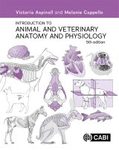![Pain Management in Ruminants Pain Management in Ruminants]()
Click to have a closer look
About this product
Customer reviews
Related products
About this product
Please note: this software was written and designed before 64-bit operating systems (OS) were introduced. If you are running a 64-bit OS,
such as a 64-bit version of Windows Vista or Windows 7, this software may not function. Please note that suppliers do not accept returns of sealed software
that has been opened, and NHBS can therefore not refund such items. If in doubt, please contact customer services or the software supplier to enquire after
compatibility before purchasing this item.
It is widely recognised that ruminants, domestic and wild, exhibit a high degree of pain tolerance, consistent with their ecological position as prey species, in which overt signs of infirmity could result in them being singled out for predation. This apparent stoicism could be interpreted as insensitivity to pain, but this is not the case, as a number of published studies have demonstrated. Importantly, in domestic ruminants, pain control has been shown to produce not only benefits in demeanour but also in productivity measures, such as growth rate and milk production.
The literature on pain and pain management in ruminants is somewhat disparate and is therefore not easily accessible. Hence Wildlife Information Network developed this Wildpro volume to assist veterinarians, veterinary students, researchers and others in considering conditions and procedures causing pain in ruminants, and management of pain.
The volume's central flowchart is divided into sections, hyperlinked as appropriate. Introductory texts on understanding pain are devloped along three main themes, neurophysiology of pain, reasons for pain relief and reasons for failure of pain relief.
In the section on assessment of pain in ruminants, behavioural and physiological responses to pain are considered, including descriptions of lameness classification systems, and the difficulty in assessing pain in these stoical species. Common painful conditions in ruminants (e.g. lameness, mastitis), and a number of painful clinical and management procedures (e.g. castration, tail docking and harvesting of velvet antler from stags) are assessed in detail.
Information on the prevention of pain for planned procedures and alleviation of pain in painful conditions is reviewed in the context of pain management options. Detailed consideration of 24 individual analgesics, their pharmacokinetics and pharmacodynamics and drug delivery methods is provided, including methods important in the treatment of ruminants which are non-domestic and/or difficult to handle.
A directory lists important organisations and websites where further information may be found.
'A very useful source of knowledge for veterinary surgeons, veterinary students and non-veterinary workers.'
Customer Reviews





















![Épidémiologie Appliquée à la Lutte Collective Contre les Maladies Animales Transmissibles Majeures [Epidemiology Applied to the Collective Fight Against Major Transmissible Animal Diseases]](http://mediacdn.nhbs.com/jackets/jackets_resizer_medium/24/248788.jpg?height=150&width=105)

